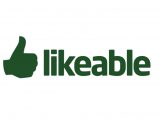There are hundreds of solutions out there carrying the label of ‘CRM’. In the past you could have seen all CRM solutions as offering the same fundamental functions, however things have changed.
CRM products are now so different one from another, they can’t be just alternative software choices to do the same job. Yes, they are all targeting a relationship database purpose and probably are all ‘best’ at fulfilling a specific requirement. If you are planning to implement a relationship database system don’t assume that by selecting the ‘best CRM’, you will have found the right one for your organisation.
In this global market, a long features list can be misleading. In the battle to be top of the market, popular CRM products are expanding the features list every few months, often without proper integration or any link to the end user’s actual requirements.
One Size Fits None
In short there is no ‘one system that does everything’ and no ‘best CRM’. Reports of customer dissatisfaction indicate that complex CRM’s tend to be time-wasting, expensive to implement, and some are too difficult to use in practice. CRM has never been easy, with project failure rates of 60%+ and untold losses. And unfortunately making the wrong strategic choice for a single enterprise-wide CRM is common and getting worse.
Getting to understand relationships while preparing for CRM success begins with understanding how your people work. This brings insight into the type of CRM design that might be right or equally importantly, the CRM types that would be wrong.
Enabling CRM or Constraining CRM design?
If you have a global workforce of thousands and the processes need to be tightly governed then “constraining” CRM’s following the original Siebel concept will fulfil your needs, however for most organisations, users expect an intuitive interface, minimal mouse clicks that support their work, not adding additional, unnecessary steps. For them, “enabling” CRM designs are a perfect fit.
Enabling CRM design gives the user the power to set their own processes, giving needed flexibility and saving time.
Sector Specific Solutions
Organisations may now have needs for both CRM types. Higher Education is probably a good example. We encountered the need for a CRM designed for ‘self-managing’ professional staff who deal with students’ support needs directly. The ‘enabling CRM’ design assumes that staff know how to do their jobs and benefit from a ‘minimum-mouse-clicks’ way of making calls, recording notes, e-mailing, accessing student lists and shared relationship data. An intuitive, tabbed interface is quicker than multi-screen process working.
Staff need flexibility to use their judgement to act quickly (even spontaneously) in the best interests of the student and the university; they have departmental trust to resolve problems that have not been seen before. They can be more motivated to give of their best by being empowered instead of being constrained. Both student and university benefit from high quality service relationships.
We implemented the Maximizer system as an enabling design with ‘no-code’ processes which allow the necessary flexibility. This agile CRM solution is currently used by over 20 Universities. There are many such departments in Higher Education (Marketing, student recruitment, Student Services, Employment, Corporate Relations, Alumni and so on) so there is considerable scope for enabling solutions. Staff can be more productive when they are not constrained by complex multiple screen processes. In commercial businesses we find that sales people have similar needs.
For more information on Maximizer contact me directly or head over to LinkedIn
Best regards,
David




